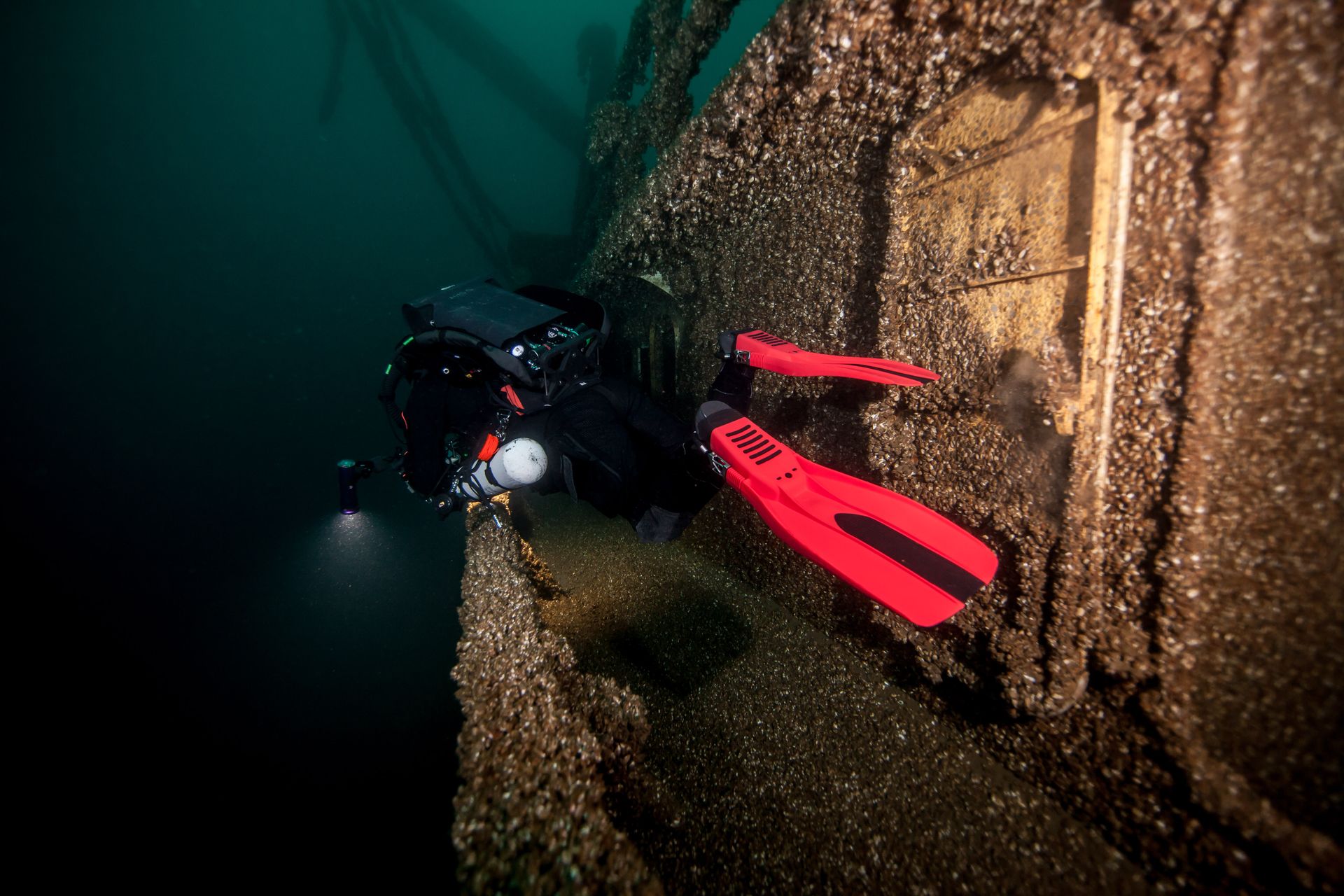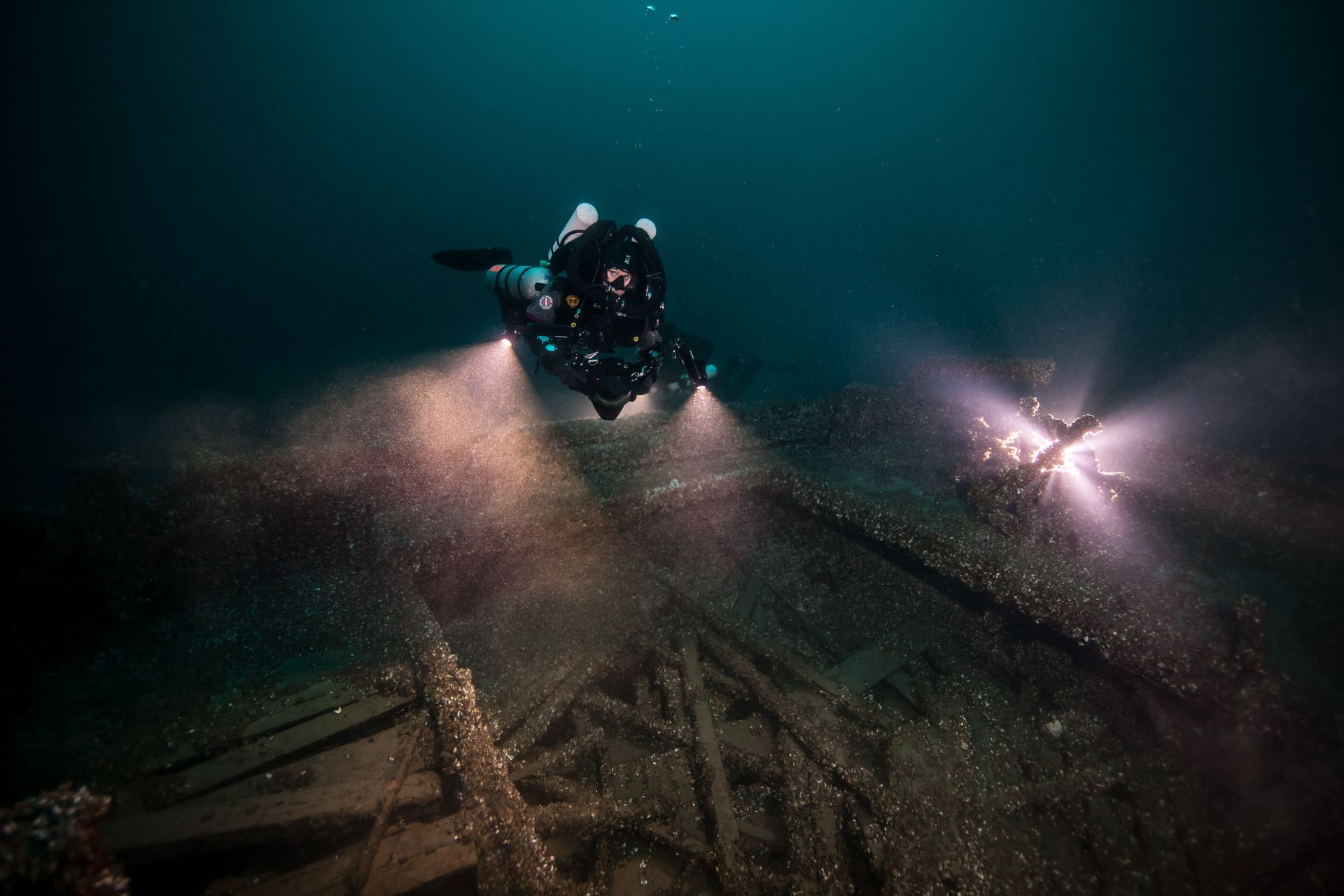About the expedition
$2,970 USD per person
Limited capacity: 5 divers
Expedition leader: Ricardo Castillo
The Great Lakes are a group of five lakes located on the border between the United States and Canada (Lake Superior, Lake Michigan, Lake Huron, Lake Erie, and Lake Ontario). They are the largest group of freshwater lakes in the world; they are also considered as closed seas. They cover a total of 245,100 km², an area similar to that of the United Kingdom, irrigating an area of 521,830 km² and with 22,671 km³ of stored water, they contain 21% of the world’s fresh water.
They began to form at the end of the last ice age around 14,000 years ago, as the melting ice caps carved basins into the land and filled them with meltwater. Lakes have been an important avenue for transportation, migration, and trade, and it is home to a large number of species.
Lake Huron is the second largest. Including the bays of Georgia and Saginaw, it occupies an area of 59,570 km², of which 36,001 km² belong to Canada. The lake basin occupies about 134,000 km2. It has a maximum length and width of 332 and 295 km, respectively. Its maximum depth is 229 meters. Its surface is located at 176 meters above sea level.

General information
The Great Lakes have been sailed since at least the 17th century and thousands of ships have sunk during this time. Many of these ships were never found, so the exact number of shipwrecks in the lakes is unknown. The Great Lakes Shipwreck Museum estimates that there are around 6,000 sunken ships and 30,000 lives lost throughout the Great Lakes’ sailing history. Historian and navigator Mark Thompson has estimated that the total number of wrecks is probably more than 25,000.
The fresh and cold water has kept most of these boats in perfect condition and the visibility we have under water is around 20m. The water temperature where we will be diving is 4ºC at the bottom and 12ºC near the surface, all the dives are with Trimix and decompression and most of them exceed 50m. depth so this expedition is only for divers certified for trimix and decompression with closed circuit rebreather. Our dives will be in some of the most emblematic sunken ships in the area.
Lakes affect climate in what is known as the «lake effect.» In winter, evaporation from westerly winds can produce heavy snowfall. The most prominent example is the amount of snow that falls in Buffalo, New York resulting from evaporation emitted by Lake Erie. Lakes also moderate seasonal temperatures, absorbing heat and cooling the air in summer, and gently releasing that heat in autumn. Despite its colossal size, a large area of the Great Lakes freezes over in winter. This stops the flow of ships during this season. Some icebreakers are used in that season.

Requirement and conditions
Specifications
Accommodation is a double occupancy fully equipped cabin with private bathroom and kitchen next to the pier where we will be going diving every day, we have a restaurant and bar in the same place where we will be staying.
Don't forget
Mandatory DAN diving insurance. Complete diving gear including dive lamp, reel, surface marker buoy, dive computer and dry suit. Hat, sunglasses, personal hygiene items and clothing for cold weather.
Additional considerations
DIN tanks available for rent:
- Doubles, sidemount, bailouts (AL40, AL80, AA 72, AA 85, AA 95).
- Tanks for CCR (AA 2L, AA 3L, AA 4L, AL 3L).
- Tanks for dry suit (AL 6CF y AA 2L).

Included
- 6 nights and 7 days.
- Boat for 5 days of diving.
- Double occupancy accommodation
- Luxury transportation available 24 hours during our expedition.
- Luxury transportation to and from the airport in Detroit Michigan.
- Taxes and park fees are included.
Not included
- Flights.
- Personal scuba gear.
- Weights, tanks, mixtures and loads (Trimix Approx $ 500 USD).
- Meals.
- Alcoholic drinks.
- The unspecified.
- Tips.